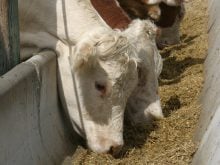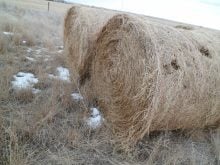For the second consecutive year, farmers and ranchers in a southern Alberta irrigation district face uncertainty regarding their ability to access water for crops and livestock.
The canals of the Lethbridge Northern Irrigation District would usually run full bore during a spring that has seen persistent dry conditions permeate the southern half of the province. But it’s only been able to provide a trickle of what’s needed this year, following a major leak in its canal system.
The issue first developed in early May after a leak was detected at the diversion from the provincially owned and operated canal system that feeds into the LNID, which comprises about 195,000 acres.
Read Also

New Alberta funding for program hopes to further unlock agritourism industry in province
Alberta Farm Fresh Producers Association is launching a new initiative thanks to $300,000 of provincial funding to bolster Alberta’s smaller scale family farms and agritourism sector.
Hopes that emergency repairs carried out in May would have the system fully operational have been dashed.
The situation is dire, according to Stephen Vandervalk, a grain grower near Fort Macleod and past-president of the Grain Growers of Canada.
“The damage is essentially done,” said Vandervalk, adding some wheat and canola crops are doing OK, but questions swirl about whether water allocations will come in time to save them. Other crops have already been written off.
“Sometimes an inch isn’t enough. And for anybody who had winter crops, it’s too late. Anybody who had hay crops, it’s too late. Silage crops, double cropping silage is no good now. So, there is no turning back on a lot of this.”
This year’s issues follow other problems in April 2022, which arose when the Piikani Nation prevented access by provincial officials to the canal infrastructure due to a dispute.
Information about the dispute and the agreement that rectified it were not publicly released.
While that situation was resolved in time to have water in the canal by early May, this year’s leakage problems persist and producers’ frustrations are growing.
“I think the time has come of no more talking about how this is going to get fixed. It’s time to talk compensation,” said Vandervalk.
He said the situation is messy. It involves issues about how repair work to the canal system was done and how it was affected by last year’s dispute.
Clarity is further hindered by lack of details about the agreement between the province and the Piikani Nation, and the state of communications between LNID and its customers.
His understanding is that work that needs to be done quickly is being stymied.
“This is a 24-7 crisis,” said Vandervalk, who listed several rumours circulating among producers as to why work isn’t being done quickly enough.
He added that LNID’s Keho Reservoir is being quickly drained and likely won’t provide relief for long unless there is plenty of rain.
Alberta Agriculture and Irrigation and LNID did not comment as of press time.
He said he’s disappointed at the lack of accountability and the lack of a clear explanation of key issues within the irrigation district by all the stakeholders.
“We’re past being able to get this fixed.”
Several creeks in southern Alberta that run into the Bow, Oldman and South Saskatchewan rivers are reporting low-flow advisories.
Little to no major rain events have occurred during May and June, traditionally the wettest months of the year in southern Alberta.
Compounding the issue is a smaller than normal snowpack. However, no major interruptions have been reported at any other southern Alberta irrigation districts so far.
















